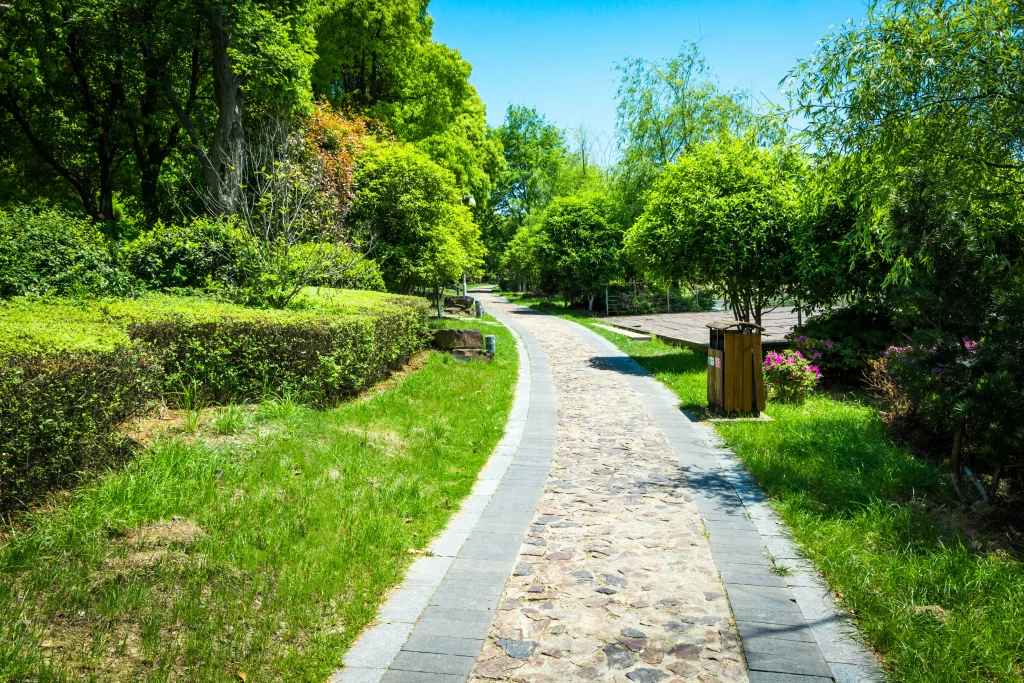Colorado’s semi-arid climate presents unique challenges for traditional lawns. With limited rainfall, high altitude, intense sun, and extreme temperature fluctuations, maintaining a lush grass often requires excessive watering, constant mowing, and regular fertilization. But what if you could have an attractive yard without all that work?
In this comprehensive guide, we’ll explore drought-tolerant grasses that thrive in our region, ground cover alternatives that eliminate mowing entirely, and xeriscaping ideas that transform your yard into a water-wise oasis.
Whether you’re looking to reduce your environmental footprint, save money on water bills, or simply reclaim your weekends, these 30 low maintenance lawn options offer practical solutions for Colorado’s challenging climate.
Buffalograss
This true Colorado native grass is exceptionally drought-hardy, requiring about 75% less water than traditional Kentucky bluegrass. It forms a soft, fine-textured turf that only needs mowing every 2-3 weeks during the growing season.
Buffalograss thrives in full sun, grows to just 4-8 inches tall naturally, and goes dormant (turning golden) during winter months, eliminating the need for fall and winter maintenance.

Blue Grama
Another native prairie grass perfectly suited to Colorado’s conditions, Blue Grama features delicate, eyelash-like seed heads above fine-textured foliage.
It requires virtually no fertilization, minimal watering once established, and can be left unmowed for a natural meadow look. When combined with Buffalograss, it creates a drought-resistant lawn that’s both practical and visually appealing.
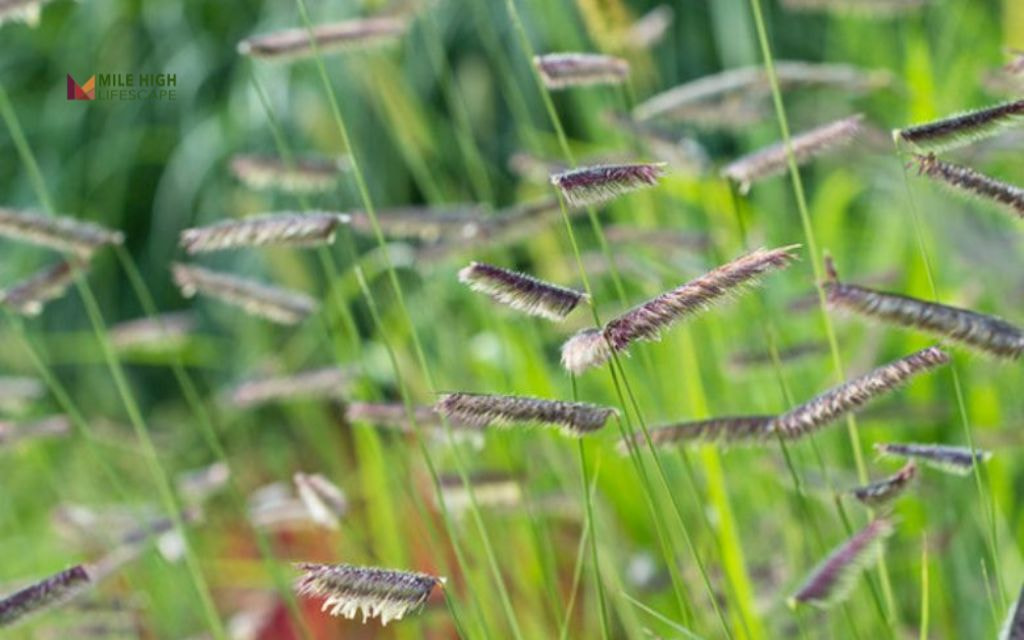
Fine Fescue Blend
This cool-season grass mix (including Creeping Red, Chewings, and Hard Fescue varieties) offers excellent performance in partial shade – a major advantage over native grasses.
With its slow growth rate and ability to thrive in poor, rocky soils, Fine Fescue requires less mowing and tolerates drought better than traditional lawn grasses.
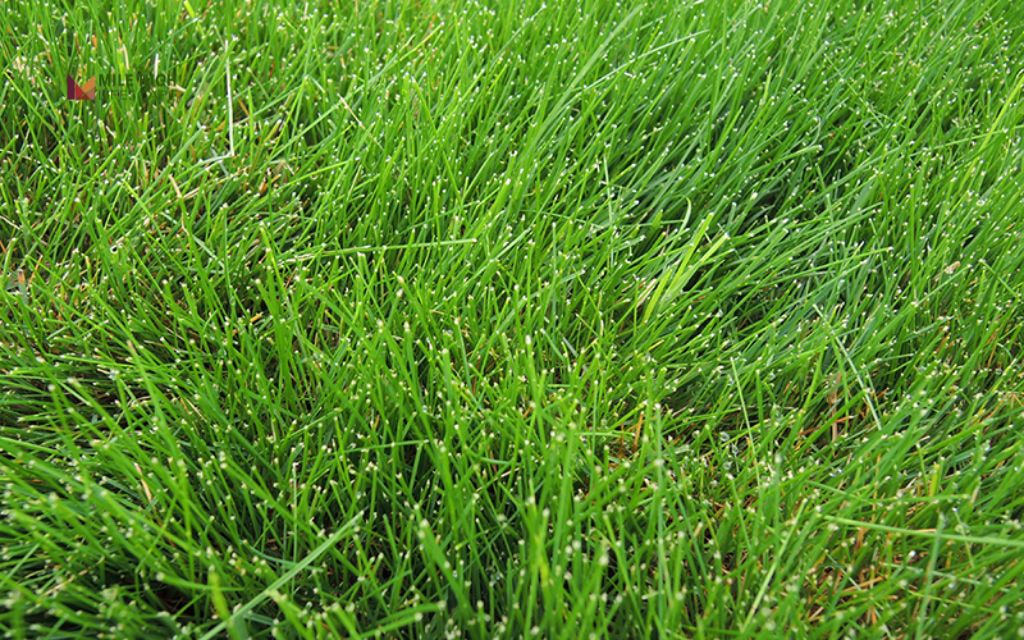
Turf-type Tall Fescue
Among the most adaptable cool-season grasses for Colorado, Tall Fescue’s deep root system (up to 2-3 feet) allows it to access subsurface moisture during dry periods.
This translates to 30% less irrigation than Kentucky bluegrass while maintaining an attractive dark green color. It performs well in both sun and partial shade and has excellent wear resistance.
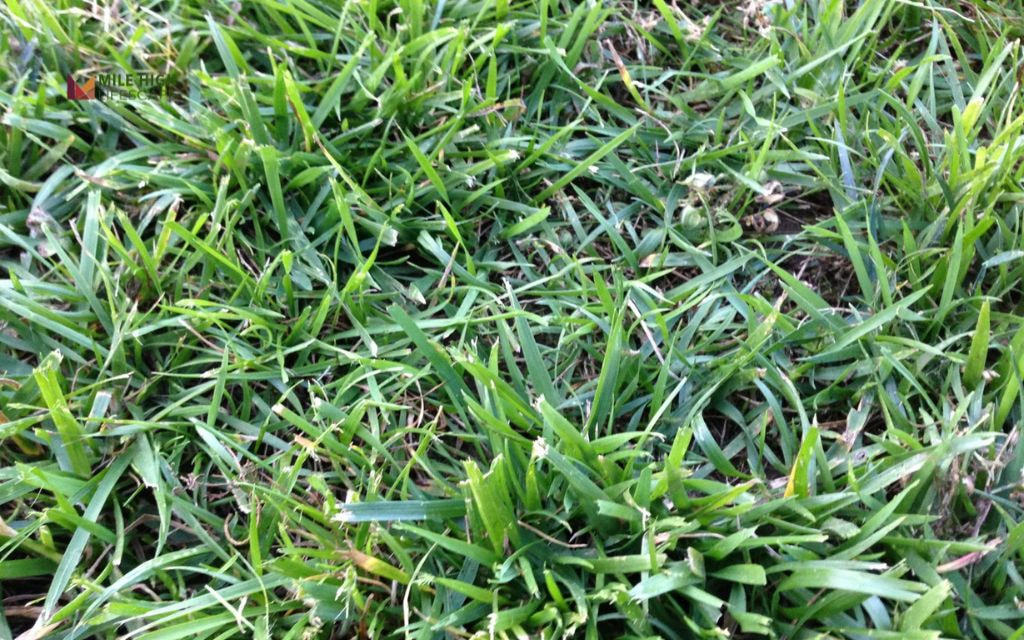
Crested Wheatgrass
Extremely drought-tolerant once established, this non-invasive bunch grass develops a beautiful golden color in summer that adds visual interest to the landscape.
It requires minimal irrigation and thrives in Colorado’s alkaline soils. Perfect for large areas where a naturalistic look is desired.
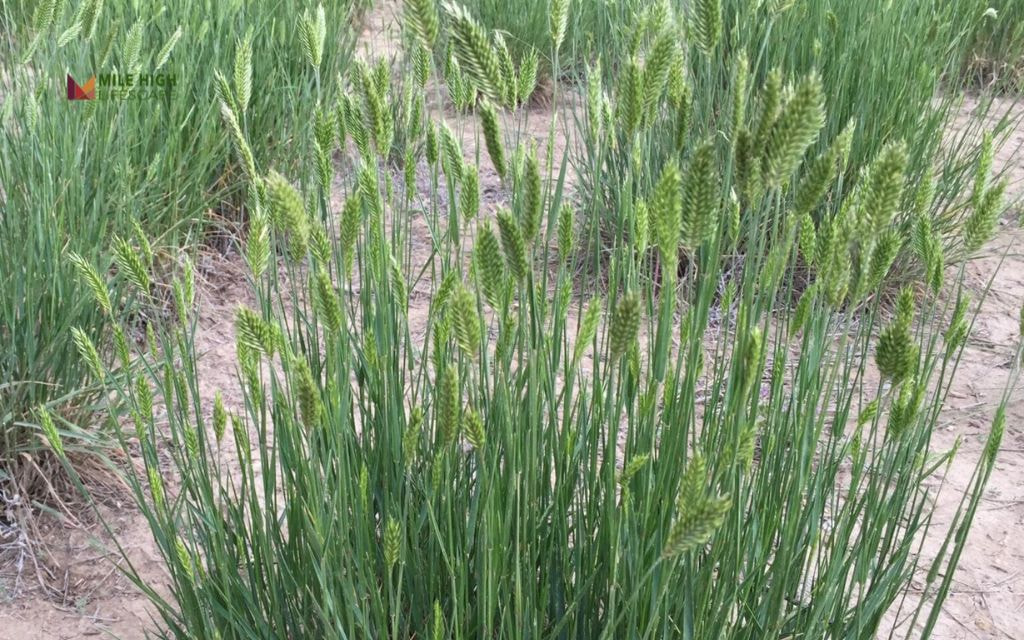
Sheep Fescue
This bunch-forming ornamental grass creates an attractive, low-maintenance lawn alternative that never needs mowing. Its blue-green color and fine texture make it an excellent choice for naturalized areas, and it can handle poor soils with minimal inputs.

Hard Fescue
One of the most shade-tolerant and drought-resistant fescues, Hard Fescue maintains excellent color with minimal irrigation.
It’s perfect for low-input lawns in challenging locations and can be mowed as infrequently as once a month during the growing season.
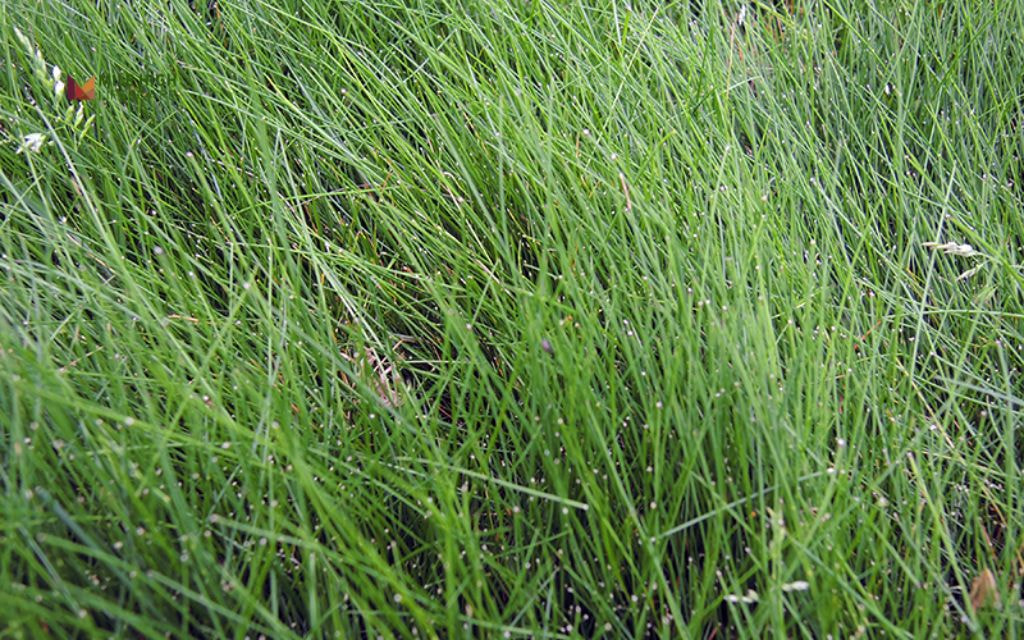
Western Wheatgrass
As a Colorado native, this rhizomatous grass spreads to form a tough, durable turf that handles foot traffic well. Its distinctive blue-green color provides aesthetic appeal, and it requires minimal maintenance once established.

Idaho Fescue
With its attractive blue-green coloration and bunch-forming habit, Idaho Fescue creates a distinctive, textural lawn alternative. It thrives with minimal water and fertilization, making it perfect for environmentally conscious homeowners.
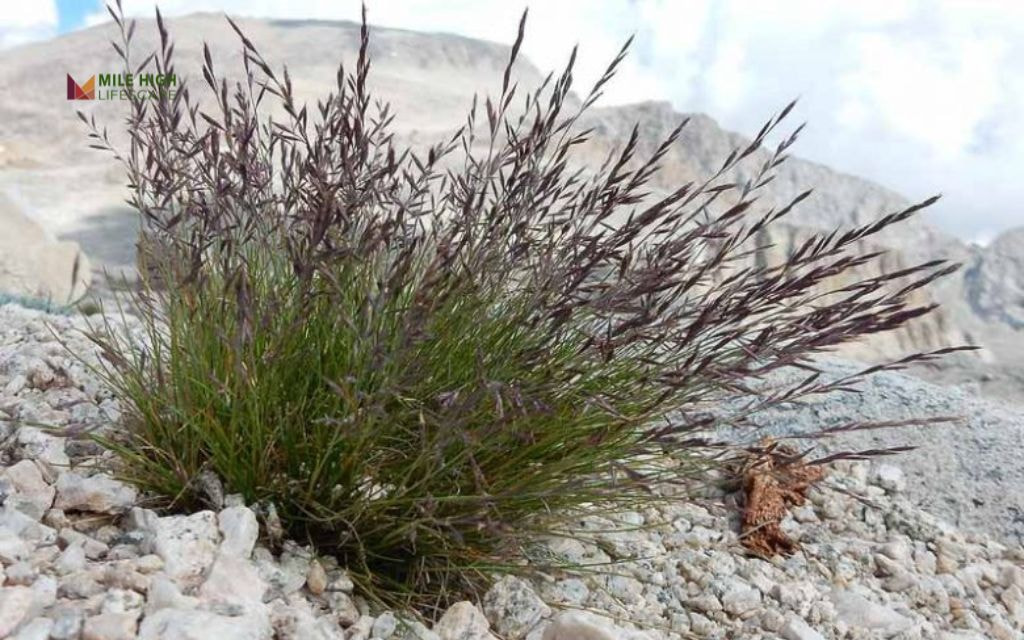
Low-Mow Kentucky Bluegrass Blend
For those who prefer the traditional lawn look but want to reduce maintenance, specialized low-mow KBG blends offer significantly slower vertical growth while maintaining the lush appearance of conventional bluegrass.
These newer varieties have been modified to require less frequent mowing while retaining drought tolerance and disease resistance.

Microclover
Microclover creates a lush, green carpet that’s becoming increasingly popular with Colorado homeowners seeking an eco-friendly low maintenance lawn option.
Growing just 4-6 inches tall in full sun to part shade conditions, it naturally fixes nitrogen in the soil, reducing the need for fertilizer while staying green even during drought periods.
Its moderate water needs and ability to handle light foot traffic make it an excellent choice for active families. When mixed with drought-tolerant grasses, it creates a resilient lawn that requires minimal maintenance and stays green year-round.
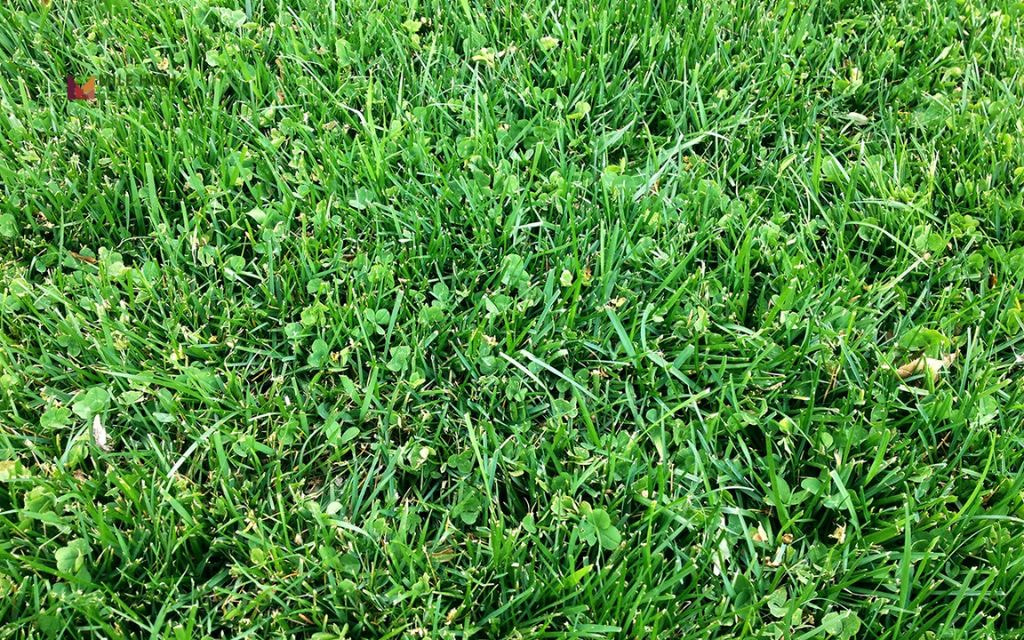
Creeping Thyme
Creeping Thyme deserves special attention for Colorado landscapes. This hardy ground cover thrives in our high-altitude, sunny conditions, forming a dense mat of tiny leaves just 2-3 inches tall topped with vibrant purple flowers in summer.
With very low water needs once established, it’s an ideal choice for environmentally conscious homeowners looking to reduce irrigation.
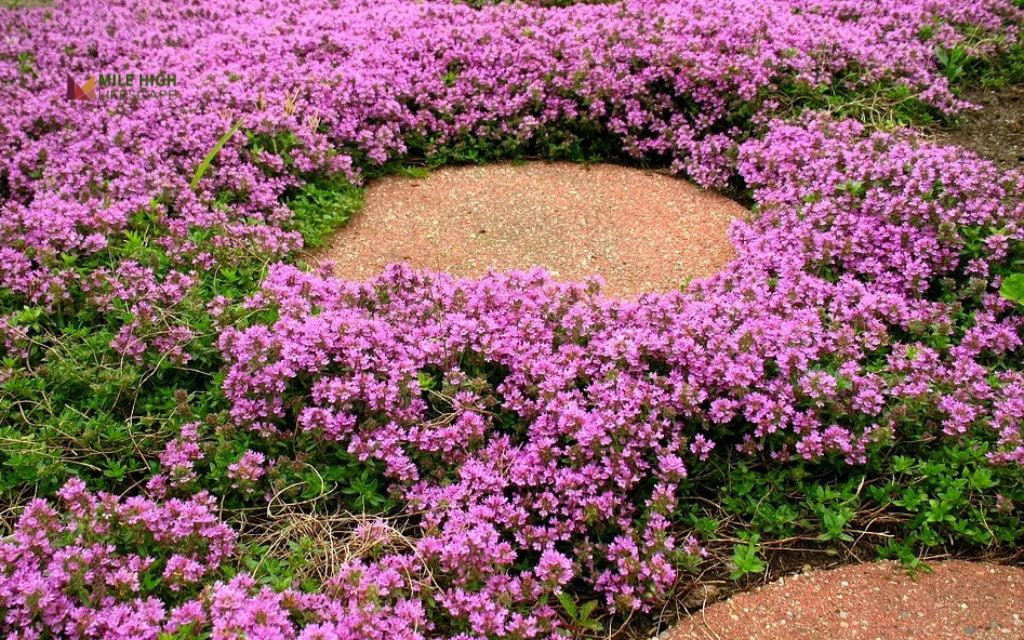
Sedum (Stonecrop)
Sedums, particularly spreading varieties like Angelina or Dragon’s Blood, offer exceptional drought tolerance thanks to their succulent leaves that store water.
Growing 2-6 inches tall in full sun locations, these low-growing plants thrive in poor, rocky soil where other plants struggle. They provide year-round interest with changing foliage colors and summer flowers that attract pollinators.

Yarrow
This Colorado native creates a feathery-textured ground cover that stands 6-12 inches tall and tolerates foot traffic better than many alternatives.
Yarrow thrives in full sun with very low water needs, making it ideal for drought-prone areas. Its flat clusters of tiny flowers (typically white, but available in other colors in cultivated varieties) attract beneficial insects while adding visual interest to the landscape.
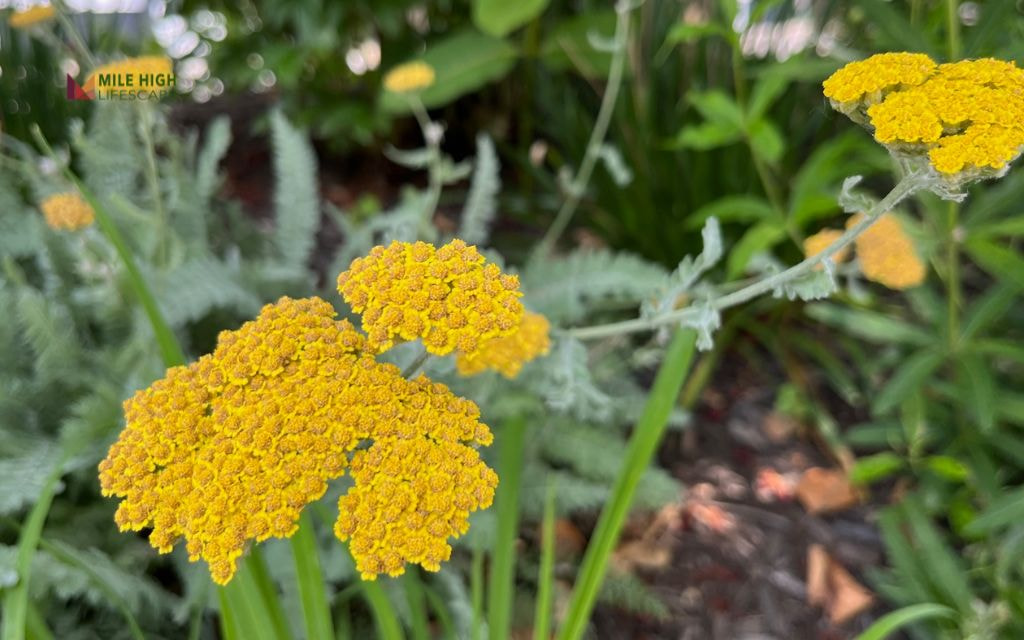
Creeping Jenny
With its brilliant chartreuse foliage growing 2-3 inches tall, Creeping Jenny (Lysimachia nummularia) brings vibrant color to partially shaded areas of the landscape.
This quick-spreading ground cover excels at filling bare spots and suppressing weeds with its dense growth habit. It requires moderate water compared to other alternatives, making it best suited for naturally moister areas of the landscape or zones where runoff collects.
Its ability to cascade over walls or flow around stepping stones makes it an attractive choice for adding visual movement to the landscape.
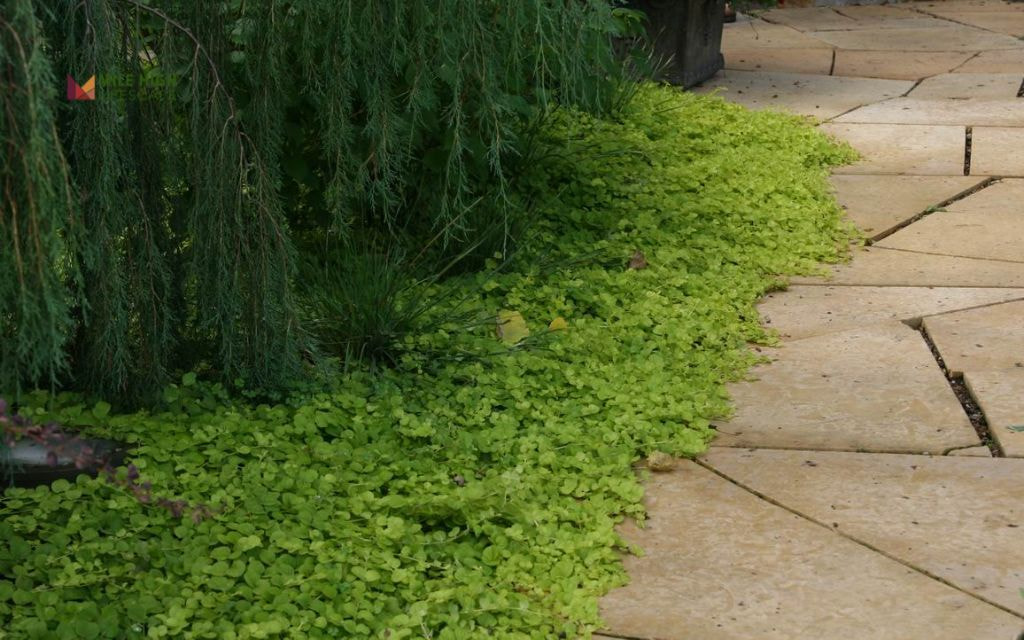
Woolly Thyme
For areas where tactile interest is desired, Woolly Thyme creates a dense, soft mat just 1-2 inches tall that’s pleasing underfoot.
Its tiny, fuzzy, gray-green leaves form a tight carpet in full sun locations, and delicate pink-purple flowers appear in summer. The unique texture adds visual interest to pathways, rock gardens, and the spaces between stepping stones.
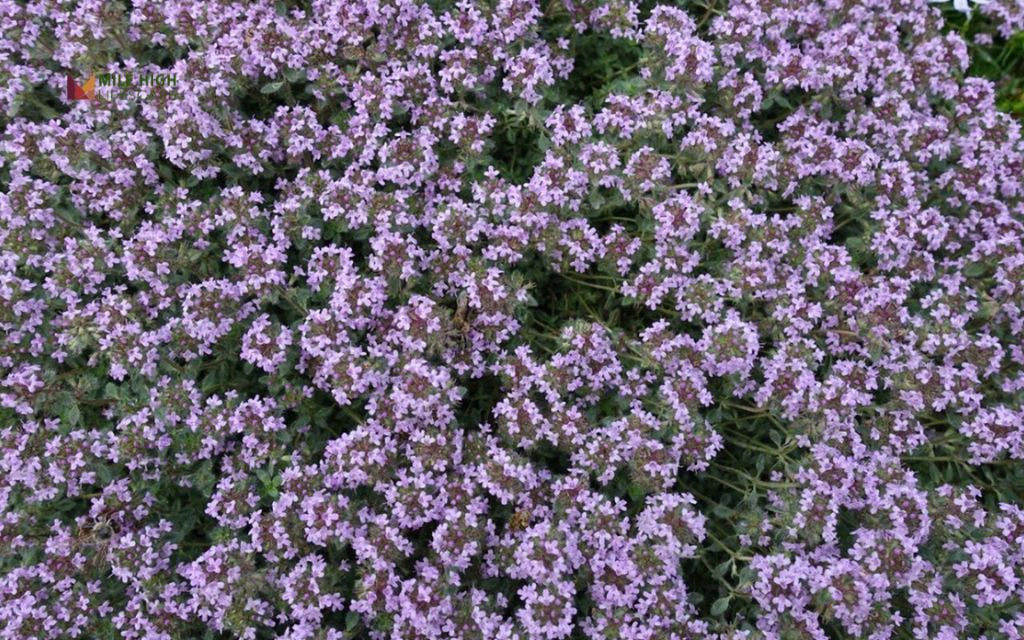
Chamomile
Roman Chamomile offers a sweet apple scent when walked upon, making it perfect for areas where sensory interest is desired. Growing 4-12 inches tall in full sun to part shade conditions, its feathery foliage is topped with daisy-like flowers in summer.
With low water needs and the ability to tolerate occasional foot traffic, it creates an informal, meadow-like ground cover that’s both functional and appealing. The flowers can even be harvested for tea, adding an edible component to your landscape.
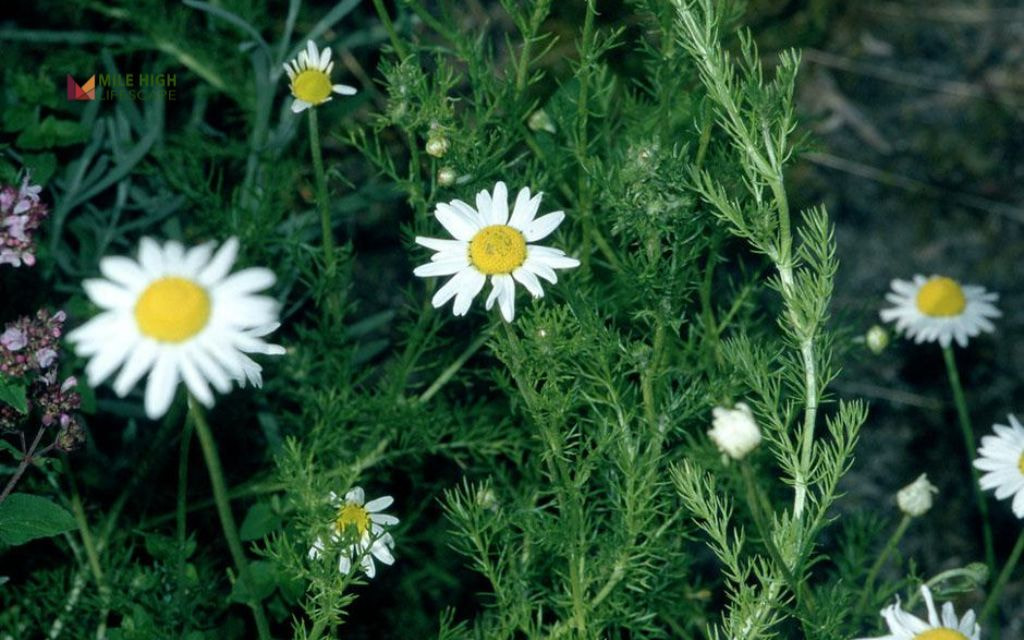
Ajuga (Bugleweed)
For partly to fully shaded areas where other ground covers struggle, Ajuga offers a perfect solution.
Growing 6-9 inches tall, its colorful foliage ranges from deep green to burgundy, bronze, or variegated patterns depending on the variety.
Its low-spreading habit quickly fills in bare spots under trees or on north-facing slopes, while spring’s spikes of blue-purple flowers add seasonal interest.
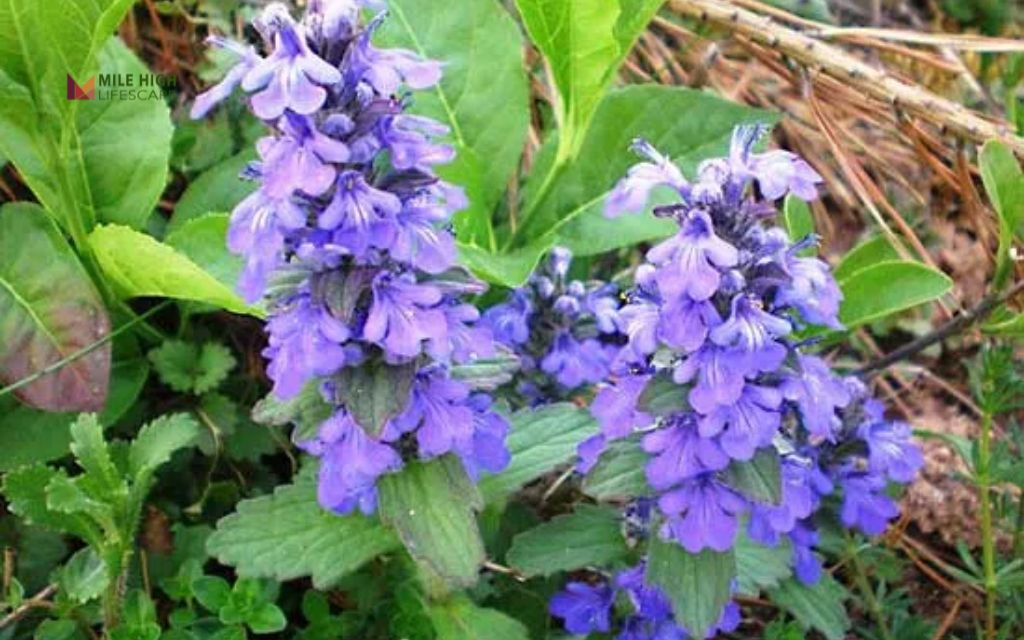
Snow-in-Summer
For dramatic visual impact in full sun locations, Snow-in-Summer (Cerastium tomentosum) creates a striking display. The reflective quality of the leaves helps this plant thrive in Colorado’s intense sunlight with low water requirements.
Its ability to cascade over walls or spread across slopes makes it ideal for challenging landscape areas where traditional lawn grasses fail.
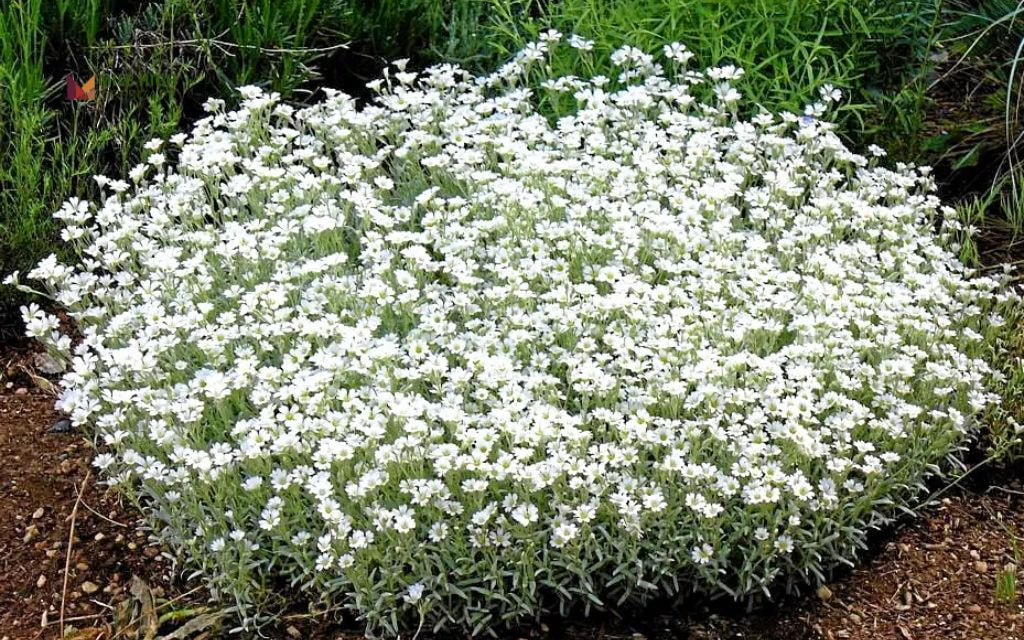
Kurapia
In full sun locations, this drought-hardy, non-invasive ground cover requires very little supplemental water once established, making it perfect for Colorado’s water-conscious homeowners. Small white flowers appear throughout the warm season, supporting pollinators without creating an overly busy appearance.
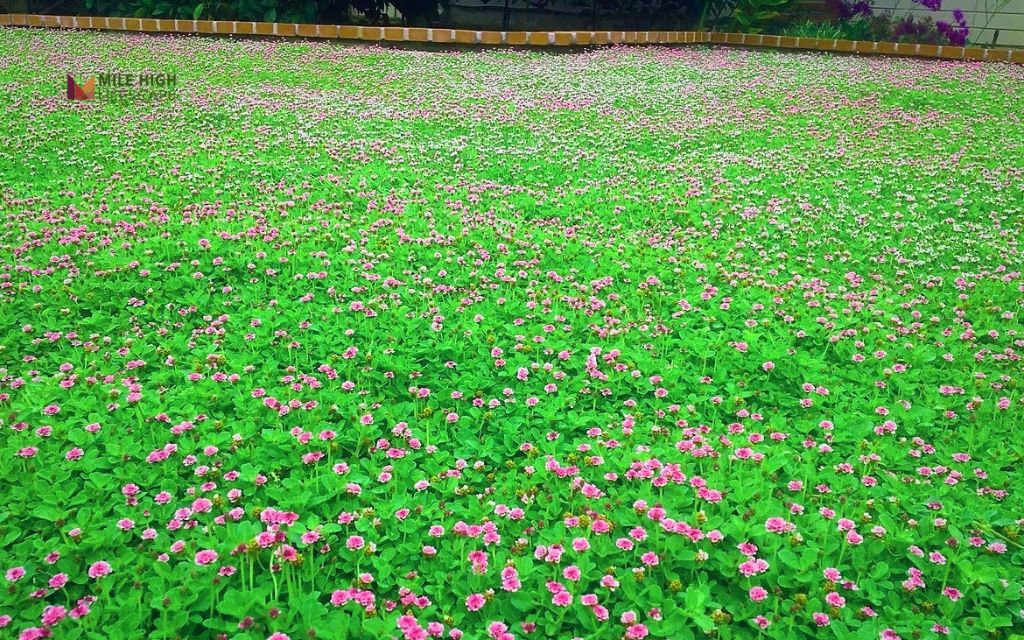
Gravel/Mulch Beds
Replace sections of water-hungry turf with attractive decomposed granite, river rock, or wood mulch to create defined, low-maintenance zones. When artfully designed with boulders and drought-tolerant plants, these areas require virtually no upkeep while adding visual interest to your landscape.
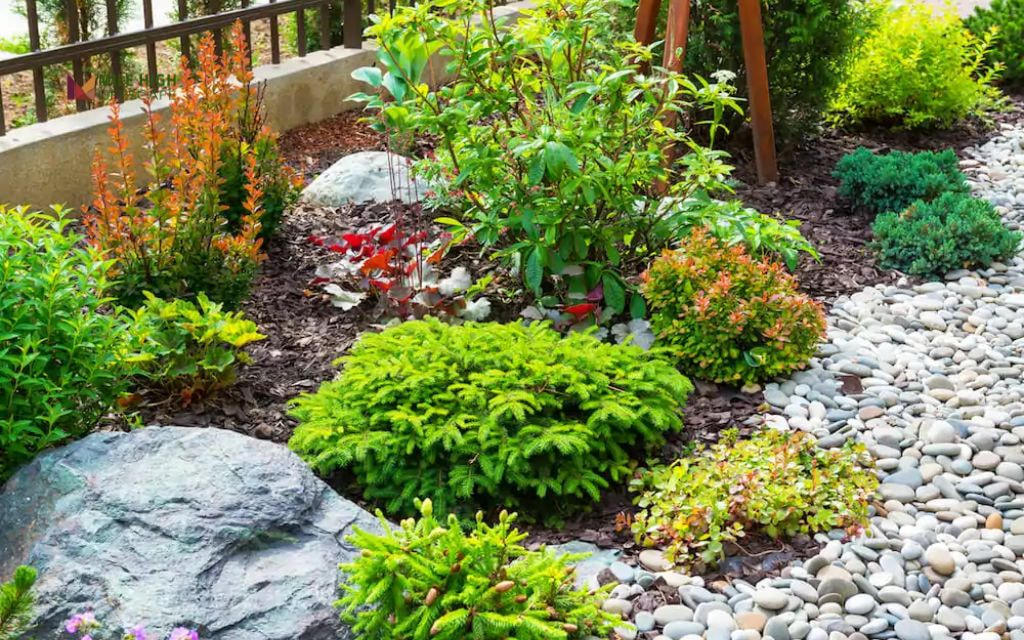
Flagstone Pathways
Incorporate natural stone pathways to create functional travel routes through your yard while preventing soil compaction.
The spaces between stones can be planted with drought-tolerant ground covers like thyme or sedum, adding texture and color to the hardscape elements.
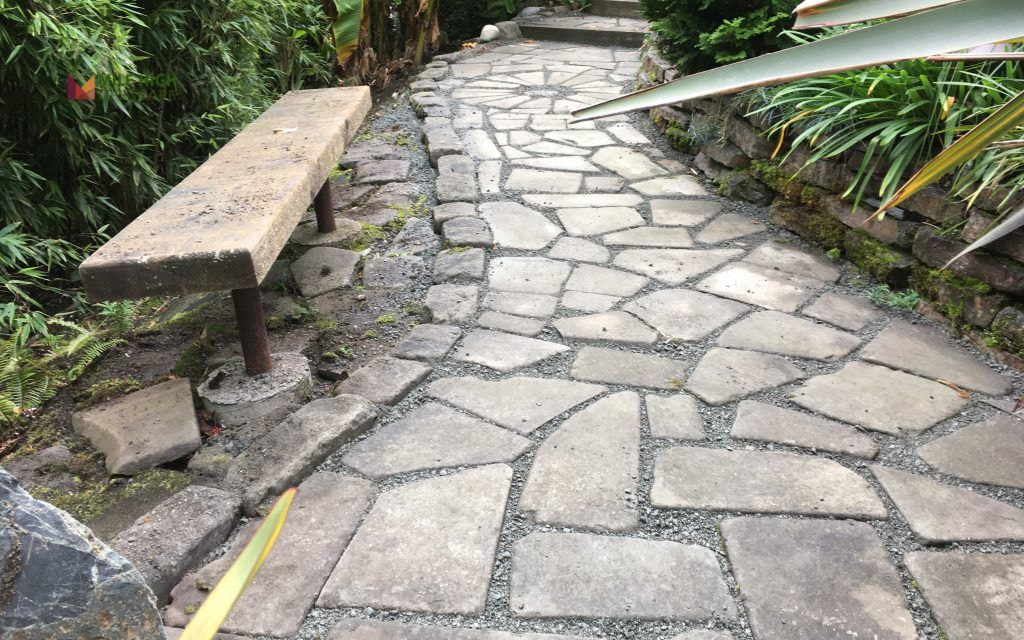
Drip Irrigation
Replace inefficient sprinklers with precision drip systems that deliver water directly to plant roots, reducing waste by up to 50%. These systems can be automated and zoned to provide different amounts of water to different plant types, further increasing efficiency.

Native Perennials
Colorado’s indigenous plants like Penstemon, Blanketflower, and Bee Balm have naturally adapted to our climate conditions. They require minimal supplemental water once established and provide beautiful blooms that attract beneficial wildlife.
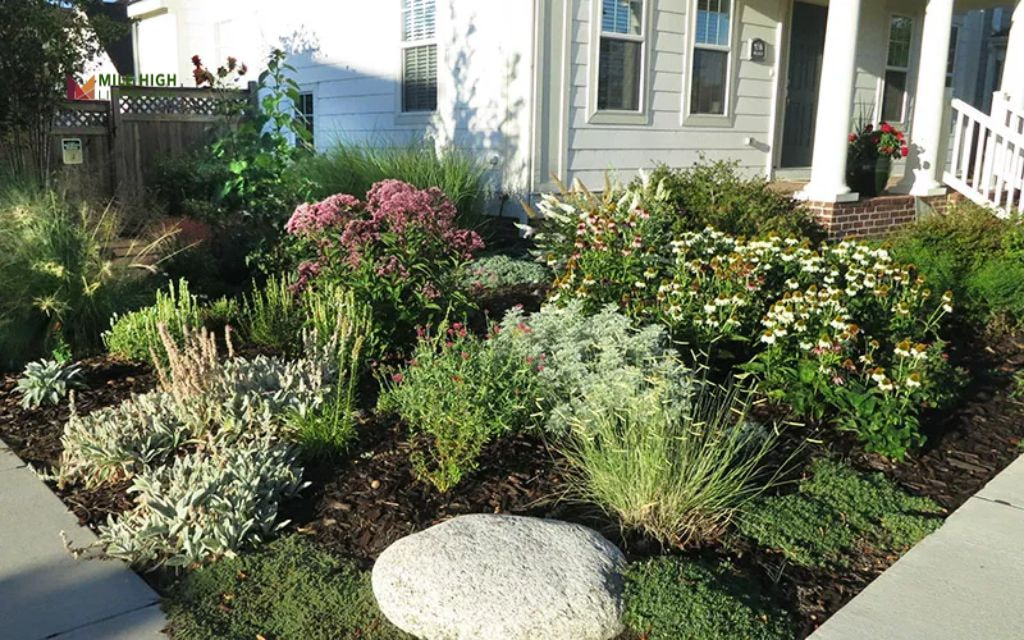
Rock Gardens
Create stunning visual focal points by combining boulders and drought-tolerant plants. These low-water landscape features mimic Colorado’s natural environments and require virtually no maintenance once established.
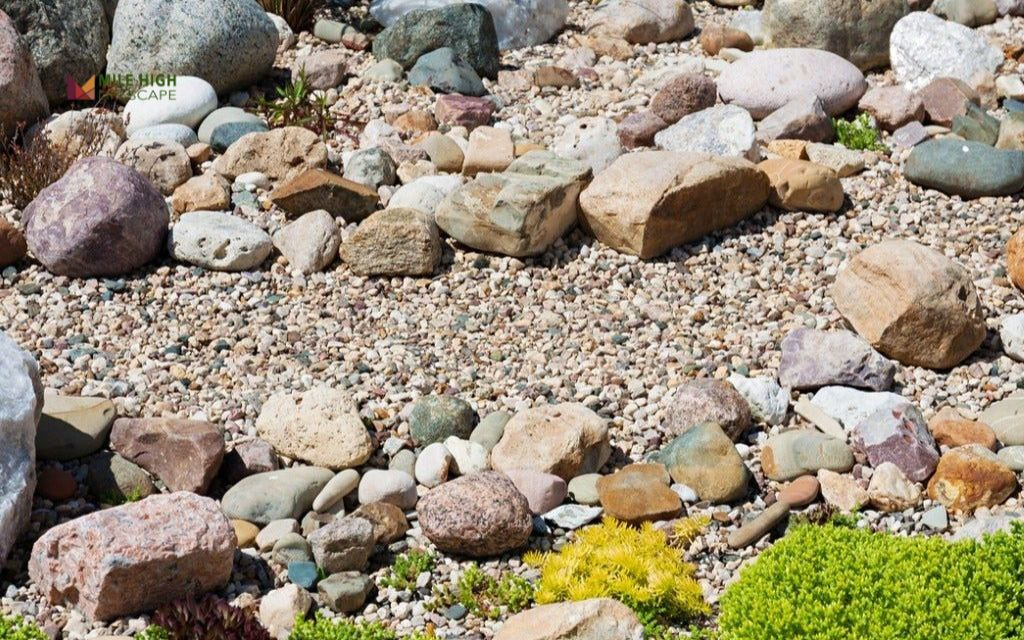
Raised Beds
Incorporate raised planters for herbs, vegetables, or ornamental grasses to add dimension and functionality to your xeriscape design. These defined growing areas allow for targeted irrigation and soil improvement where it matters most.
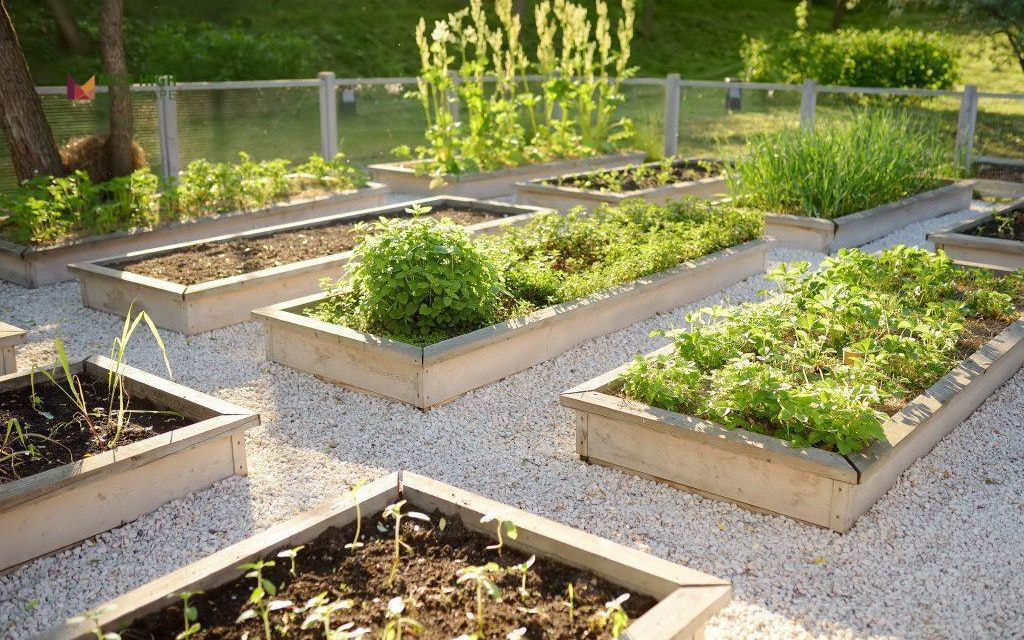
Corten Steel Borders
Define landscape zones with modern, rustic-looking weathered steel edging. These long-lasting borders create clean transitions between different materials and prevent gravel or mulch from migrating into planted areas.
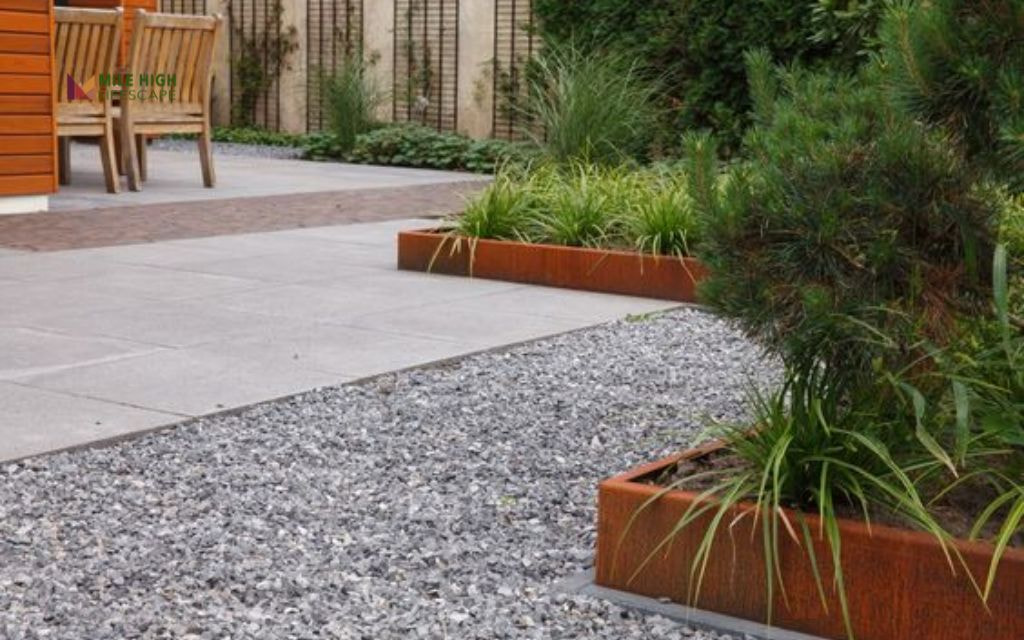
Rain Gardens
Design shallow depressions planted with native species that can capture and filter stormwater runoff from your roof or driveway. These sustainable features reduce erosion and pollution while creating habitat for beneficial insects.
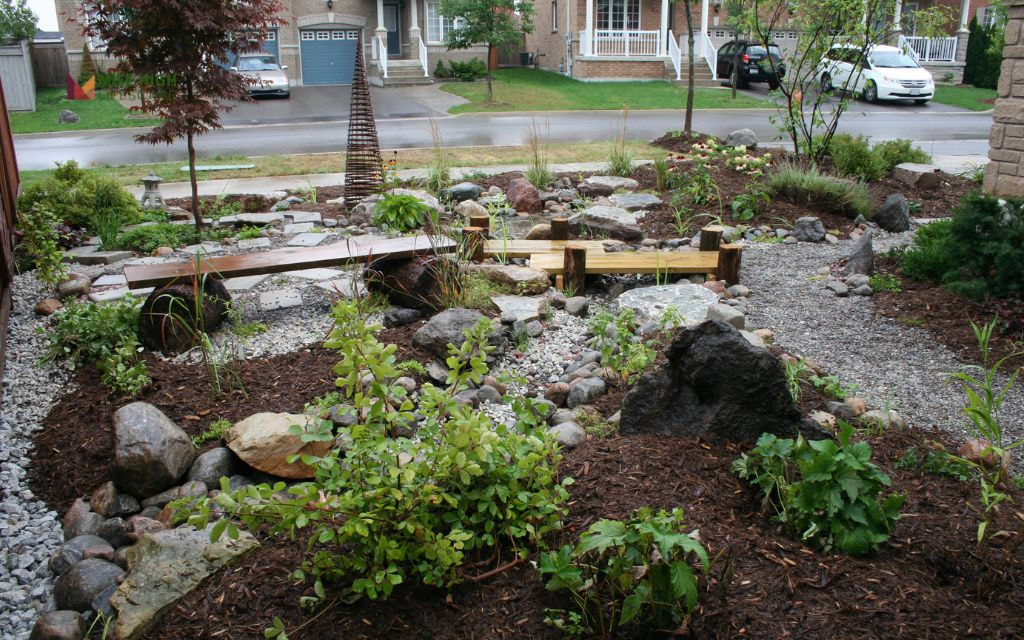
Decorative Boulders
Place large rocks strategically throughout your landscape to serve as sculptural accents that require zero maintenance. Colorado’s local stone options provide regional character while creating microclimates for plants that benefit from the thermal mass.
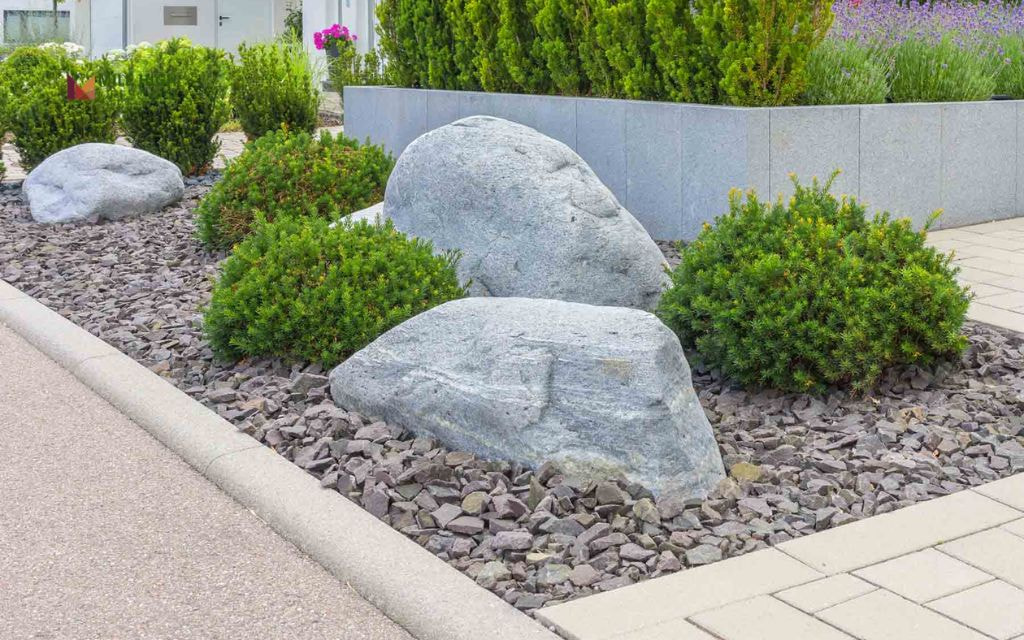
Drought-Tolerant Shrubs
Anchor your xeriscape with low-maintenance woody plants like Apache Plume, Sumac, and Russian Sage. These native and adapted shrubs provide structure, seasonal interest, and wildlife habitat with minimal water requirements.

Design Tips for a Low Maintenance Lawn Look You’ll Love
Creating an attractive, low-maintenance lawn is about balancing visual interest with practical functionality. The key is thoughtful design that reduces upkeep while maintaining aesthetic appeal:
- Combine different ground covers, stones, and native plants to create a tapestry of textures and colors that evolve throughout the seasons. Rather than vast expanses of a single material, create visually interesting transitions between different elements.
- Avoid the monotony of conventional lawns by diversifying textures. Contrast the fine texture of Blue Grama grass with the broader leaves of yucca or the feathery foliage of yarrow. Incorporate varied surfaces – the smoothness of river rock against the roughness of bark mulch, for instance – to create visual depth.
- Use curved beds and pathways to create a more natural-looking landscape that draws the eye through the garden. The interplay between soft plant materials and harder elements like stone or wood creates pleasing contrast.
- A smart layout is your best defense against maintenance headaches. Group plants with similar water needs together (a practice called hydrozoning), and position higher-water plants in naturally moister areas of your yard, such as depressions or northern exposures.
- Place taller plants on the north side of beds to avoid shading lower-growing sun lovers, and leave adequate spacing between plants to reduce competition and potential disease issues as they mature.
Why Choose a Low Maintenance Lawn in Colorado?
Water conservation is perhaps the most compelling reason to choose low-maintenance lawn options. In Denver, traditional turf lawns consume approximately 50% of household water use during the growing season – a precious resource in our drought-prone region. A water-wise lawn alternative can reduce landscape irrigation by 30-60%, significantly lowering your environmental footprint and utility bills.
The time savings are equally impressive. A conventional lawn requires weekly (sometimes twice-weekly) mowing during peak growing season, plus regular edging, fertilizing, aerating, and weed control. Low-maintenance alternatives can slash these time commitments by 50-75%, freeing up your weekends for more enjoyable activities.
Top Benefits of Low Maintenance Lawns in Colorado:
- Water conservation: Reduce landscape irrigation by 30-60%
- Lower utility bills: Save hundreds of dollars annually on water costs
- Reduced equipment needs: Less mowing means lower fuel and maintenance expenses
- Environmental benefits: Decreased emissions from lawn equipment and reduced chemical use
- Wildlife support: Native plant options create habitat for pollinators and birds
- Year-round interest: Many alternatives provide seasonal color changes and flowers
- Increased resilience: Better adaptation to Colorado’s frequent droughts and weather extremes
- Lower long-term costs: Once established, most alternatives require minimal replacement
Maintenance Tasks You Still Need (But Not Much)
While low maintenance lawn options drastically reduce your workload, they don’t eliminate it entirely. Here’s what you can expect to handle:
- Occasional Weed Control: Even the most tightly planted ground covers or drought-resistant lawns will see some weed penetration. Plan to spend a few minutes every couple of weeks hand-pulling emerging weeds before they establish and become problematic.
- Seasonal Trimming/Deadheading: Many flowering ground covers and native plants benefit from light pruning after their bloom period to maintain a tidy appearance and encourage reblooming. This is typically a once or twice per season task, rather than the weekly commitment of mowing.
- Annual Mulch Refreshing: Wood mulch in xeriscape beds gradually breaks down, requiring an annual top-up to maintain its weed-suppressing and moisture-conserving benefits. This typically involves adding a thin layer (1-2 inches) of fresh mulch in spring or fall.
- Deep Watering During Extended Drought: Even the most drought-tolerant plants need some supplemental irrigation during Colorado’s occasionally extreme dry periods. Plan to provide deep, infrequent watering every 2-3 weeks during summer for established xeric landscapes—far less than the twice-weekly watering conventional lawns require.
- Light Raking or Aerating: Native grass lawns benefit from occasional raking to remove thatch and improve air circulation. This simple maintenance task, performed once in spring, helps maintain lawn health and appearance throughout the growing season.
- Spot Reseeding/Replacement: Over time, you may need to address thin spots in grass alternatives or replace individual plants that have reached the end of their lifespan. This is typically a minor, localized task rather than the wholesale renovation conventional lawns often require.
When to Call in the Pros
At Mile High Lifescape, we specialize in converting high-maintenance lawns to sustainable, low-water landscapes that complement Colorado’s natural beauty.
Our team can help with everything from initial design to complete installation, creating a custom plan that fits your lifestyle, aesthetic preferences, and maintenance goals.
Contact us for a consultation to discuss how we can transform your yard into a beautiful, water-wise environment that requires minimal upkeep while providing maximum enjoyment.
Conclusion
Creating a low maintenance lawn in Colorado isn’t just about saving time – it’s about working smarter with nature. From drought-tolerant grasses to stunning ground covers and rock garden designs, there are so many ways to build a beautiful yard that thrives in our climate.
Whether you’re tired of constant mowing or looking to cut back on water use, these low-effort options give you lasting beauty with minimal upkeep.
At Mile High Lifescape, we help homeowners design spaces that look great and feel effortless. Ready to ditch the work and enjoy your weekends? Let’s build your dream low maintenance lawn today.
Frequently Asked Questions (FAQs)
What is the least maintenance lawn option for Colorado?
For the absolute minimum maintenance, a combination of decomposed granite or river rock with strategically placed drought-resistant shrubs and perennials requires virtually no regular upkeep beyond occasional weeding. If you prefer some living ground cover, Sedum (stonecrop) varieties offer extremely low maintenance with minimal water requirements.
What can I use instead of grass for my Colorado lawn?
Popular grass alternatives in Colorado include native shortgrasses like Buffalograss and Blue Grama; ground covers such as Creeping Thyme, Sedum, and Yarrow; and xeriscape elements like ornamental grasses combined with mulched beds. The best choice depends on your specific site conditions, aesthetic preferences, and how you use your outdoor space.
Which lawn grass is easiest to maintain in Colorado?
Buffalograss is generally considered the lowest-maintenance true lawn grass for Colorado’s Front Range. It requires about 75% less water than Kentucky bluegrass, needs mowing only every 2-3 weeks (or can be left unmowed for a meadow-like appearance), and rarely requires fertilization or pest control.
What is no-mow grass, and does it work in Colorado?
No-mow grasses include specially bred fescue blends and native grasses that naturally grow to a manageable height without regular cutting. These work exceptionally well in Colorado’s climate. Fine fescue blends perform best in partially shaded areas, while native options like Buffalo grass and Blue Grama excel in sunny locations.
What grass makes the prettiest lawn in Colorado?
For those prioritizing aesthetics, a low-water Kentucky Bluegrass blend still offers the classic, carpet-like lawn appearance many homeowners desire, though with higher maintenance requirements than native options.
Can low maintenance lawns survive Colorado’s winters?
Absolutely. Most recommended low-maintenance options are either native to Colorado or adapted to similar climate conditions, making them well-equipped to handle our winter extremes. Native grasses like Buffalograss and Blue Grama naturally go dormant during winter (turning a tawny golden color), then green up quickly when warm weather returns.
